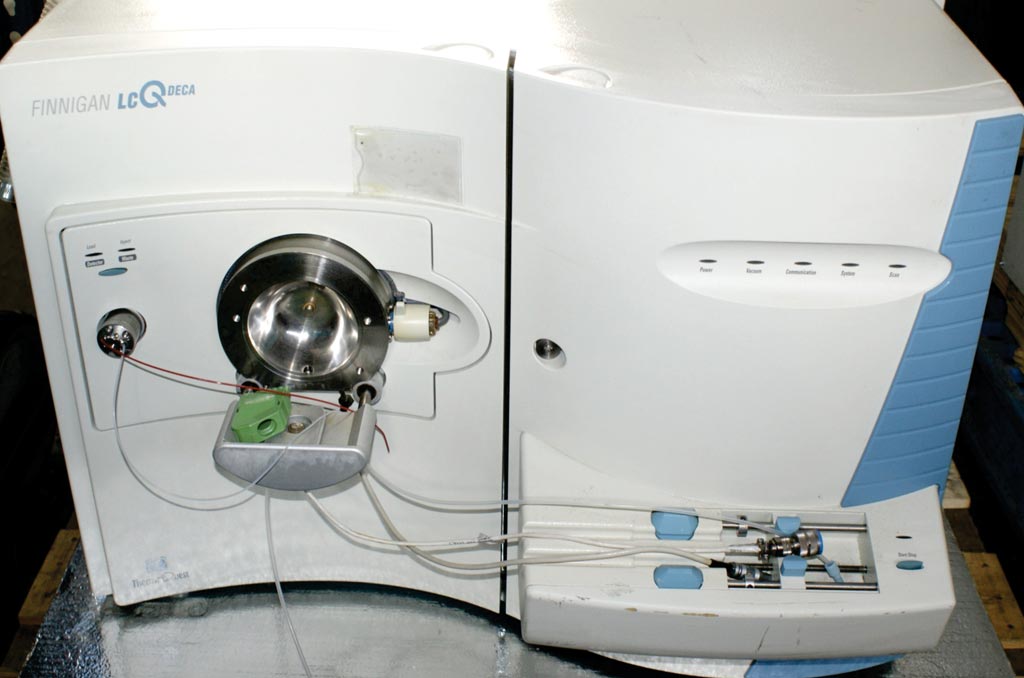Biochemical Method Diagnoses Autism in Children
By LabMedica International staff writers
Posted on 07 Apr 2017
The number of diagnosed cases of Autism Spectrum Disorders (ASD) has increased dramatically over the last four decades; however, there is still considerable debate regarding the underlying pathophysiology of ASD.Posted on 07 Apr 2017
Although ASD is currently diagnosed and treated based solely on psychometric tools, a biochemical view applicable to at least a subset of ASD cases is emerging. Abnormalities in folate-dependent one carbon metabolism and transsulfuration pathways can summarize a large number of observations of genetic and environmental effects that increase ASD predisposition.

Image: The LCQ tandem mass spectrometer (Photo courtesy Thermo Fisher Scientific).
Biotechnologists from the Rensselaer Polytechnic Institute, analyzed measurements of metabolite concentrations of the folate-dependent one-carbon metabolism and transulfuration pathways taken from blood samples of 83 participants with ASD and 76 age-matched neurotypical peers. The team measured plasma total folate and vitamin B12 using SimulTRAC-SNB Radioassay Kit for Vitamin B12/Folate.
Purified DNA was digested into component nucleotides using nuclease P1, snake venom phosphodieasterase, and alkaline phosphatase. DNA base separation and quantification of 5-methylcytosine and cytosine was performed with a Dionex HPLC–UV system coupled to an electrospray ionization (ESI) tandem mass spectrometer using a Phenomenex Gemini column. The concentration of 8-oxo-deoxyguanosine in DNA was quantified with HPLC electrochemical detection.
Fisher Discriminant Analysis enables multivariate classification of the participants as on the spectrum or neurotypical which results in 96.1% of all neurotypical participants being correctly identified as such while still correctly identifying 97.6% of the ASD cohort. Both methionine and S-adenosylmethionine (SAM) were significantly decreased in children with autism compared to their paired unaffected siblings; however, there were no differences between siblings and unrelated age-matched controls. The methylation inhibitors, S-adenosylhomocysteine (SAH) and adenosine were significantly increased in case children compared to their siblings. The children with autism were different from both siblings and unrelated controls for all metabolites except for homocysteine, folate and B12, which were not different between groups.
The authors concluded that oxidative protein/DNA damage and DNA hypomethylation (epigenetic alteration) were found in autistic children but not paired siblings or controls. These data indicate that the deficit in antioxidant and methylation capacity is specific for autism and may promote cellular damage and altered epigenetic gene expression. The study was published on March 16, 2017, in the journal PLOS Computational Biology.




 assay.jpg)









